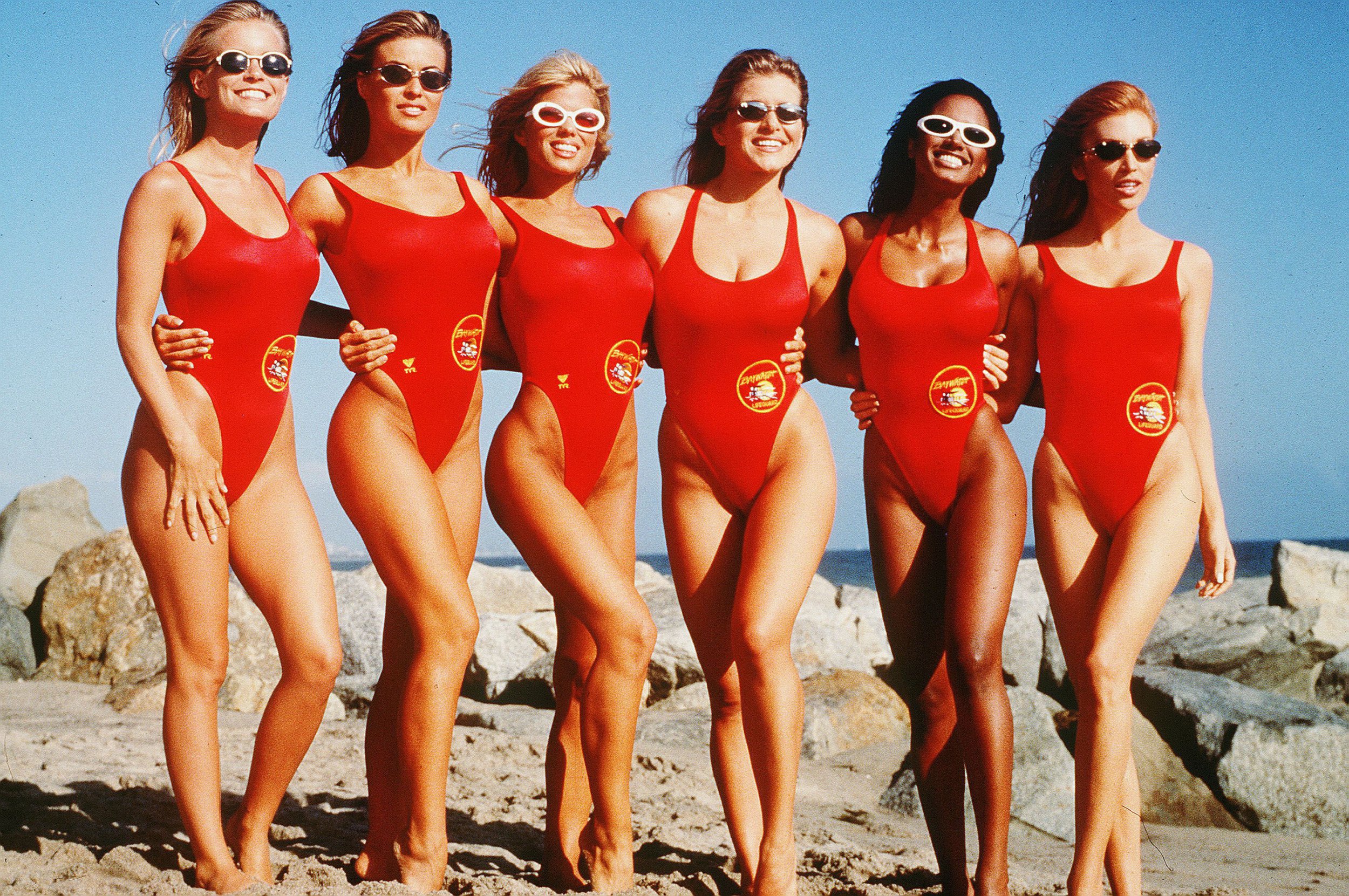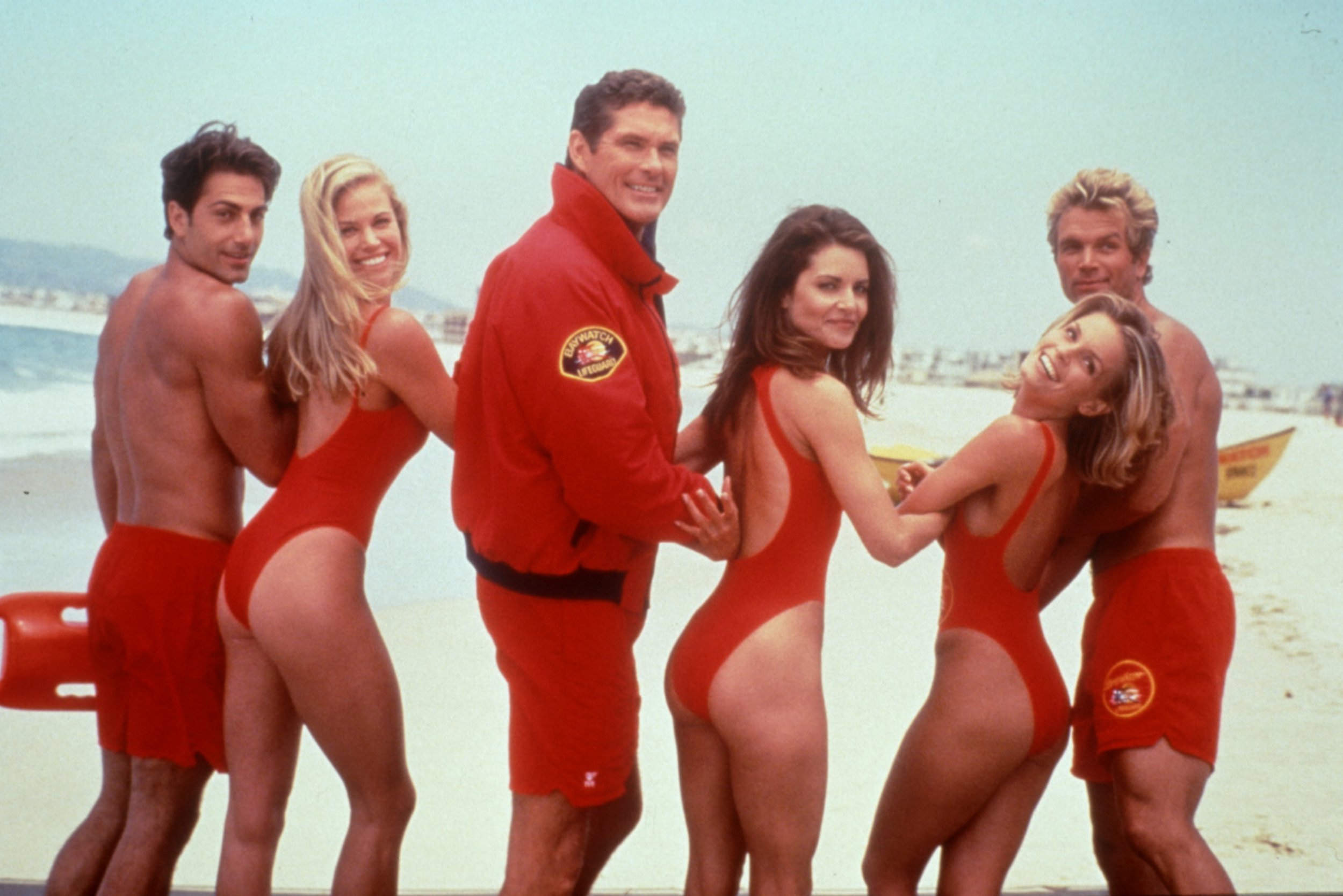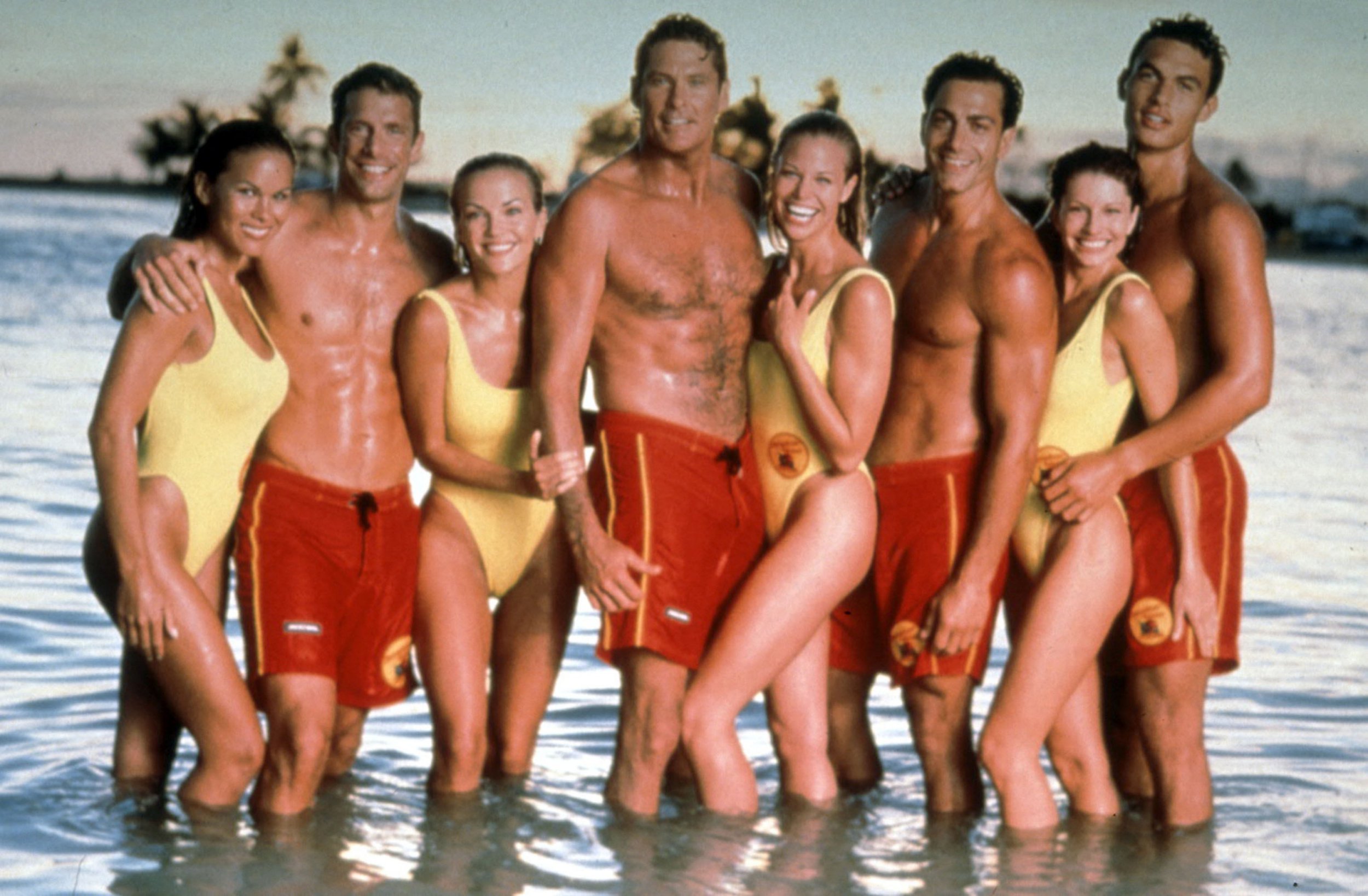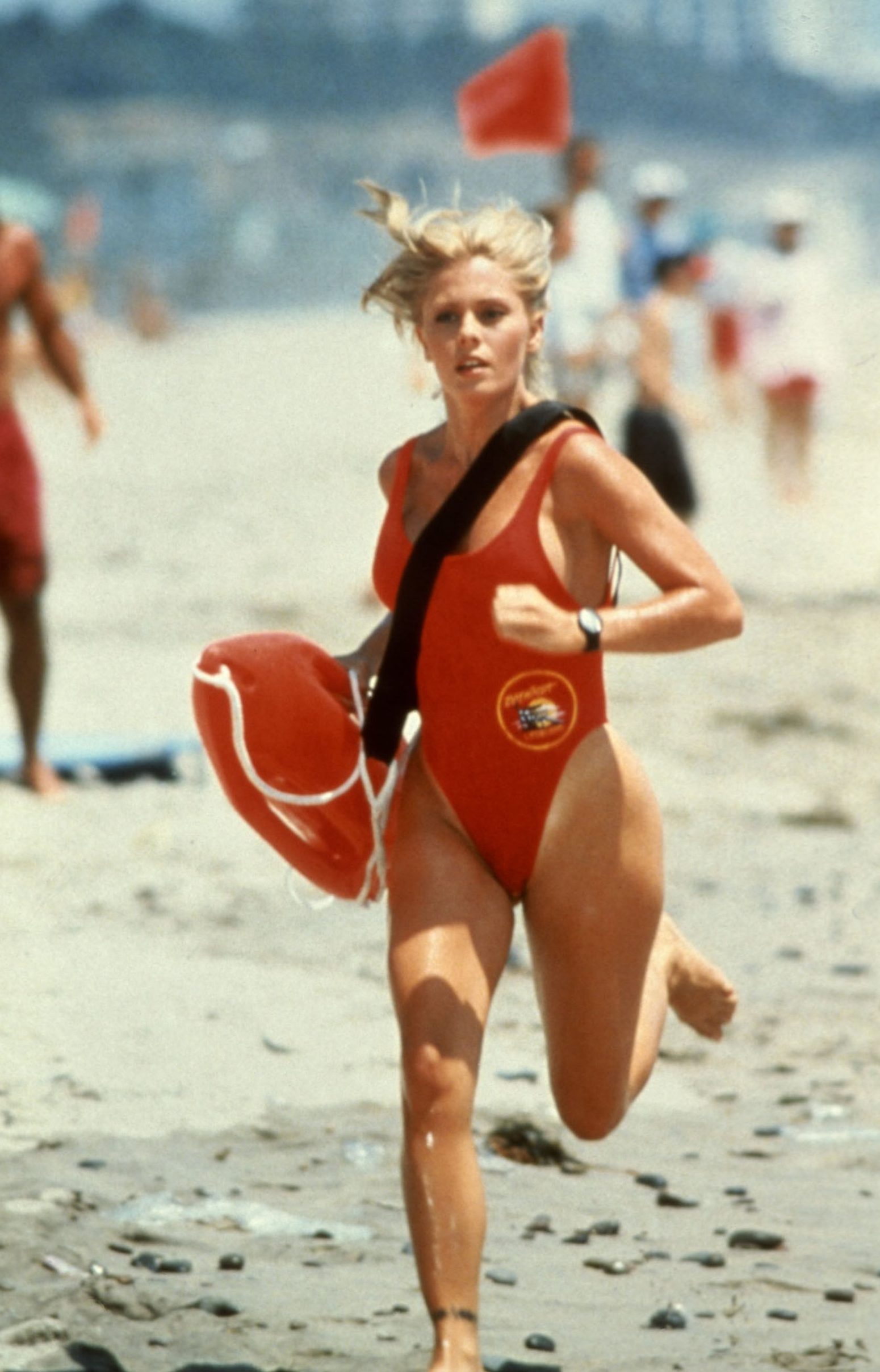
25 years after the original went off air. But how will the new series reckon with the of the franchise?
Many millennials have vague childhood memories of entering the living room on Saturday nights and catching a glimpse of red swimming costumes and tanned skin on the TV.
Those red swimsuits became a sort of right of passage among those who reached adolescence between 1989 and 1999, the years Baywatch was on air and one of the most popular TV programmes in the world. At its height, the show attracted over one billion global viewers a week and 15 million in the UK alone.
While the show was a soapy drama about a group of Los Angeles lifeguards navigating life, love, and the choppy waters of the Pacific Ocean, everyone was aware that the plot was secondary for many, particularly teenage boys and notorious superfans and Joey Tribbiani.
Known for long close-up slow-mo shots of cast members jogging towards the shoreline, Baywatch became synonymous with ogling hot women in skimpy swimwear and little else. To be more specific, it became synonymous with ogling thin, white women.
Now, in 2024, fans are wondering how the new Baywatch series will compare to the original.


News of the revival of the series has come with the tagline: ‘Daring ocean rescues, pristine beaches, and iconic red bathing suits are back, along with a whole new generation of Baywatch lifeguards, who navigate complicated, messy personal lives in this action-packed reboot that demonstrates there’s the family you’re born into and the family you find.’
While on the surface this same description could be applied to the original series with ease, it doesn’t reveal what new showrunner, Lara Olsen, plans to do about the show’s tradition of overt misogyny and lack of diversity.
Baywatch has long been criticised for its treatment of its female characters, only offering them substantive plot lines or meaningful character development if it meant an excuse to film them in even skimpier outfits than those classic red swimming suits.

Pamela Anderson in particular was burdened with sex symbol status after joining the show as CJ in 1992. Rarely given meaningful acting to do yet shown on screen (at least parts of her) almost constantly, Anderson was reduced to her body so thoroughly by Baywatch that she struggled to emerge from the 90s as anything but a dorm room poster or a punchline.
She , ‘My breasts have a career. I’m just tagging along.’ That’s how entirely plot, acting, and character development took a backseat to steamy shots of beautiful women splashing in the surf.
Erika Eleniak, who was on the show from its premiere until 1992, about how being branded a ‘Baywatch girl’ made it difficult for anyone to take her seriously as an actress: ‘I’m going up for a role, I studied, I worked really hard, I got great opportunities, and often I would go in and they would ask me my last job and I would say Baywatch, and I would be asked to leave. That’s no joke, I’m being very serious.’

On the other hand, , who starred in all but the final season of the show, was often given the more seriously dramatic plotlines – and was even often allowed to wear clothes while participating in them.
The series also had a serious representation problem. The vast majority of cast members over the show’s 10-year run were white, with very few exceptions (perhaps most notably Traci Bingham as Jordan Tate, but she only appeared from 1996 to 1998).
There was also an obvious focus on a certain kind of body, with toned abs and general thinness being the clear expectation for every cast member. Heterosexuality was also the norm, which is particularly notable given that an air of hypersexuality permeated every moment of the show and plotlines often revolved around romantic entanglements.
The new series is admittedly faced with a difficult problem. People think of Baywatch and think of those infamous one-pieces and the things they did and didn’t cover, so how do you make a show called Baywatch and not engage with that legacy? Without the slow-mo jogging and the tanlines, it’s not Baywatch, it’s just a show about lifeguards.

The 2017 movie remake, helmed by Dwayne Johnson and Zac Efron, ran into this same problem. The film was not only a complete flop but was to engage with the gender politics inevitable in the movie.
The film features the kind of casual misogyny and objectification characteristic of the original series but eventually offers viewers an impotent ‘look, women are people too!’ happily ever after, doing little to improve on the original.

While it seems almost inevitable that the same fate will befall the new series, it’s important to note that there are plenty of ways to show the female body without objectifying it or creating unrealistic body standards. Think of shows like or , which feature female nudity, even in sexual situations, while allowing characters to retain autonomy and a sense of personhood.
The problem with Baywatch was never the swimsuits, it was the lack of character development and depth offered to the non-male leads combined with the narrow view of what was sexy (thin, white, straight). The female leads were routinely sexualised without ever being allowed to express any sexuality themselves, making them passive objects of lust, not characters.
There’s so much to love about Baywatch: The high drama rescues, the escapism of the blue sky and sandy beaches, the general sense of eternal summer. With such a beloved premise to work with, it would be great if the new series could also offer viewers protagonists who are fully realised and complex.
Hopefully, the reboot will do better and focus on creating women who are more than just their physical assets. Just as importantly, it will also ideally feature a cast that isn’t just comprised of straight thin white people.
Of course, the red swimsuit should remain an integral part of the series, but please can people of all shapes, sizes, races, and gender identities wear it?
After all, there’s nothing wrong with a fun, sexy show about beautiful young people looking and feeling sexy – as long as everyone is let in on the fun.




















